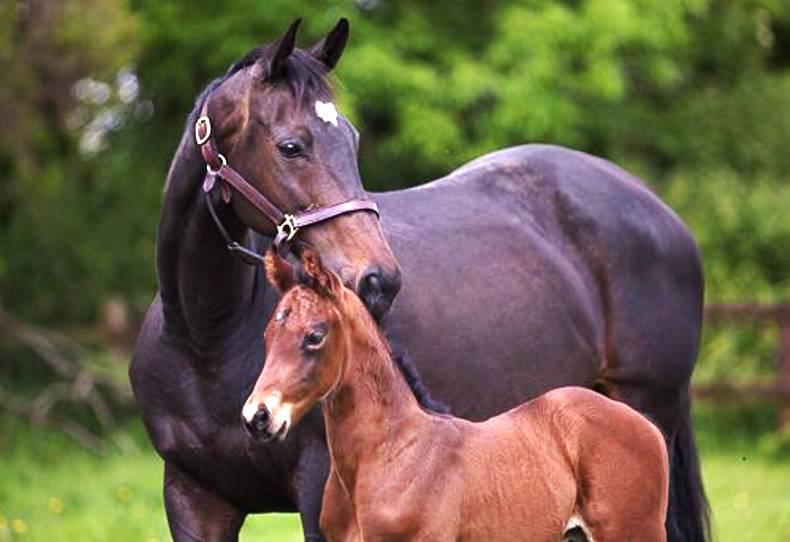IN terms of buying a foal, some of what you look for can vary depending on whether you are buying a foal intended for commercial re-sale or a foal that is going home to the field intended for racing.
However, I believe that you should always try to buy a good horse, a racehorse, not just something that can be improved and make money.
Hence, the principles of what I look for, would be the same in both cases.
SHAPE
Shape is the overall priority with its relationship to balance, propulsion and athleticism. They need to have scope and proportional length of frame. I personally like a good head and eye and length of neck.
Without question quality, style and confidence are also vital in any racehorse, but they do come in all shapes and sizes, and often they are not the ‘perfect model’. Proportion tends to stay relatively constant as they grow and develop, though dimensions clearly change, sometimes for the better and often the worse!
A foal can be a ‘bag of bones’ providing the shape is right, and it has some propulsion and body movement.
I like muscular strength but not necessarily as ‘bulk’ in a foal.
I just like to see that the musculature is even over the foal, and that the foal is a natural mover even if it lacks physical strength and substance at that early stage. Clearly they also need to be healthy even if physically backward.
MUSCULATURE
All-over movement throughout a foal’s body indicates a balanced musculature and hence propulsion and eventual power.
For me, this is more important than length of stride. Most foals come to the sales very well-taught and prepared. However, compared to yearlings sales preparation, there is still a limit to what can be ‘created’ in the time between weaning and foal sales.
I make allowances for some foals being pushed in their preparation and hence their movement may not be as naturally easy and athletic as their shape might suggest. They often hit a growth spurt when they are fed for sales, and many will go upright on their pasterns. This tends to restrict their use of themselves as does the constant walking up and down and the resulting sore feet.
Movement in their shoulders, quarters and across their back is what I look for rather than the long swinging walk of a commercial appeal yearling.
LIMB CONFORMATION
I don’t like a badly-shaped hind leg but I will forgive a lot of front-end leg issues if the foal has movement and muscular propulsion. I don’t like a foal that toes in at this stage. However, I have learnt and I am still learning, often the hard way, from the homebreds that things change, particularly if you start with the right frame of mind. So legs, yes, are important, but not as much as shape to me.
SOUND ADVICE
A great and very successful buyer of racehorses as foals, Alec Head, once told me that he liked to buy foals as “what you see is what you get” in terms of shape, personality, confidence, et cetera.
Yearling preparation is so professional now, that some of the natural instinct can be lost or diluted as a young horse is taught to move a certain way, to stand and perform and hence their natural carriage can be altered, whereas the oportunity to do that with a foal is more limited.
I have often looked at sale foals and compared them with the homebred foals we have in the field.
Allowing for the sales foals being cleaner and shinier and clearly fed, there is little difference. When it comes to the same comparison with sales and homebred yearlings, the differences are often marked.
Sometimes for the better but often just an extra layer of fat.
Fiona Craig, Moyglare Stud Farm, Maynooth, Co Kildare
